Want to see birds without ever having to leave home? Look no further than outside your own window. All you need to attract birds is the right type of bird feeder and food.
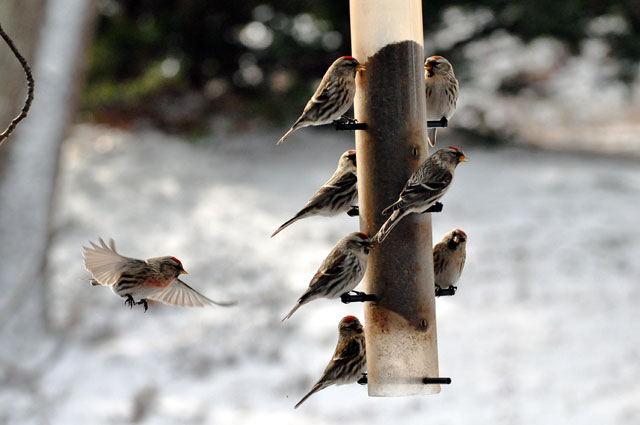
© Susumu Kishihara
And don’t be concerned about creating a hardship for birds should you decide to take a hiatus from bird feeding. Backyard bird feeders account for a relatively small percent of a bird’s overall food supply, which is why when traditional food is available (i.e., worms, insects, seeds, berries, etc), birds will often opt for that instead.
Sunflower Seeds
What: There are 2 types of sunflower seeds usually used to feed birds: black oil sunflower seed and black striped sunflower seed. The black oil sunflower seed has a soft shell and a large oily meat inside, thus making it an energy-rich food source.
Black striped sunflower seed is larger with a tougher shell, and is usually eaten only when black oil sunflower seed is unavailable. Sunflower seed is also commercially available already hulled (with the shell removed). This is often called sunflower hearts.
Which Birds: Songbirds such as chickadees, titmice, nuthatches, finches, and jays universally prefer black oil sunflower seed. Hulled sunflower is favored by smaller species such as chickadees and finches, and is sometimes consumed by species such as juncos that cannot open sunflower seeds.
How: Sunflower seed is best offered in hanging feeders, especially tube feeders such as this one.
Suet
What: Beef suet is a hard, white fat that’s rich in heat-producing calories, making it particularly valuable to birds in the winter.
Which Birds: A favorite food of woodpeckers, suet is also well liked by chickadees, titmice, nuthatches, creepers, and the occasional wintering warbler.
How: Suet is best offered raw in specially designed suet holders that allow birds to peck away a small piece at a time. It can also be melted down slowly into liquid and mixed with ingredients such as peanut butter and cornmeal to form cakes. Commercially made suet cakes are available; use the “heat-resistant” formulas in the summer when high temperatures can cause raw, unrendered suet to turn rancid. Check out suet feeder options >
Note: Bird-feeding guides commonly include recipes for various suet cakes. Although often called for in these recipes, whole seeds should not be mixed into suet cakes. Most species that eat suet will not eat whole seeds. The only exception to this is peanut pieces and hulled sunflower pieces.
Fruit
What: Some of the same types of fresh fruit you enjoy are also loved by birds.
Which Birds: Orioles often have a “sweet beak” for halved apples and oranges. House finches, some woodpeckers, and starlings will also occasionally eat fresh fruit. Raisins and currants sometimes attract mockingbirds and catbirds, as well as a wintering thrasher or hermit thrush, especially if the fruit is water-soaked first.
How: Sections can be impaled on branches or offered in specially designed fruit feeders that have spikes to hold the fruit. Some fruit feeders also have small trays for holding jelly or jam. Moistened raisins and currants are best offered on open platforms or tray feeders.
Millet
What: White proso millet is a small, round, yellowish grass seed that is found in most birdseed mixes.
Which Birds: Ground-feeding birds, especially doves, sparrows, juncos, towhees, and cardinals, tend to opt for millet.
How: Seed mixtures containing millet are best offered on low platform feeders and not in hanging feeders. Birds that come to hanging feeders are usually looking for sunflower seed and will often push other seeds to the ground.
Note: Other seeds commonly found in mixes, including milo, wheat, red millet, and hemp, are generally not well accepted by the birds. These seeds exist mostly as fillers in cheaper mixes and should be avoided if possible. Read the label when buying mixed seed to avoid these less popular seeds.
Niger (Nyjer) Seed
What: This small, black, rod-shaped seed in the sunflower family is native to eastern Africa and has been cultivated as a food crop in Ethiopia and India. The trade name “Nyjer” was created to avoid mispronunciation. Currently imported and sold at premium prices, this seed is being tested as a promising cash crop in the United States.
Which Birds: It is extremely popular with finches such as siskins, goldfinches, and house finches, and even with turkeys and mourning doves when it is spread on the ground.
How: This seed is relatively expensive and sometimes goes untouched at feeders where black oil sunflower is available. Offer this seed in a separate, specially designed feeder (often called thistle or finch feeder), which has small holes for dispensing the tiny seed, and periodically check uneaten seeds since they have a tendency to spoil rapidly, especially when moist.
Want to learn more? Check out our bird feeding frequently asked questions >


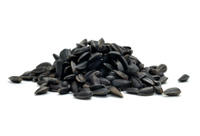
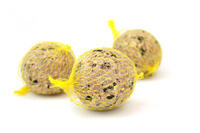
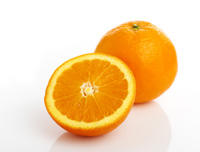
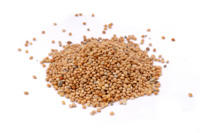
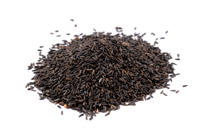
I love attracting birds to my yard! I think it is also good for my kid to see the different wildlife and to feed them. I really like finches so I will try more sunflowers!